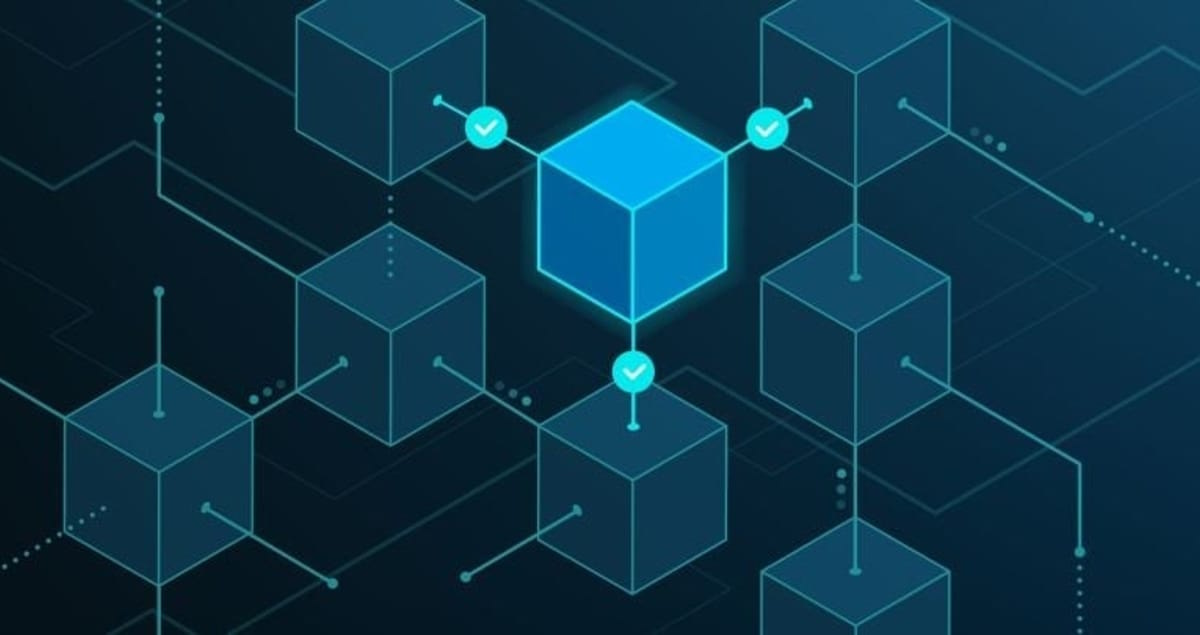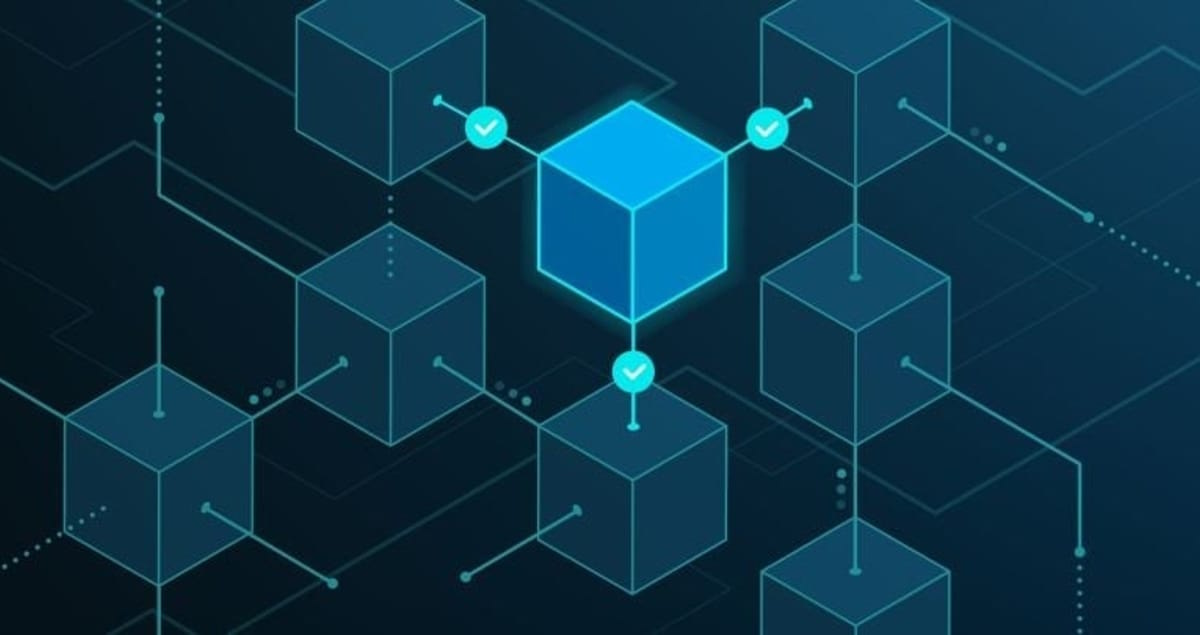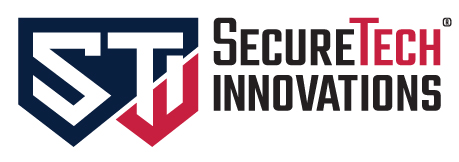Blockchain
BloFin CEO Unveils Roadmap for a Future of Global Finance

Blockchain
Blocks & Headlines: Today in Blockchain – May 20, 2025

Blockchain innovation continues to accelerate, weaving together emerging technologies, sustainability goals, and new financial models. In today’s Blocks & Headlines briefing—May 20, 2025—we explore five groundbreaking stories: Cerebra Supernova’s AI-blockchain energy convergence, Chainlink/Kinexys/Ondo’s blockchain DVP trial, the launch of Blockchain Cloud Mining’s “Master” digital-gold platform, Sakhila Mirza steering Responsible Gold’s blockchain expansion, and Automobili Estrema’s NFT-powered “Dizzy Viper” art drop. Each development signals how Web3, DeFi, and NFTs are reshaping finance, supply chains, and creative industries. Below, we strip away hyperlinks, offer concise coverage, and provide op-ed insights on the broader implications for blockchain’s next chapter.
1. AI & Blockchain Convergence for Sustainable Energy Systems
Key News: Cerebra Supernova, a French startup, has unveiled a pilot platform that combines AI-driven grid optimization with a blockchain-enabled energy-credit marketplace. By using reinforcement-learning algorithms to forecast renewable output and smart contracts to automate peer-to-peer energy trades, the system aims to reduce curtailment and incentivize prosumers.
Details:
-
Reinforcement Learning Grid Management: AI agents predict wind and solar generation with 98% accuracy, dynamically adjusting dispatchable assets (batteries, gas turbines) to maintain stability.
-
Energy-Credit Tokens: Green-energy surplus is tokenized as “SolarLoop” ERC-20 tokens, tradable among households, businesses, and utilities with settlement on an Ethereum Layer-2 network.
-
Sustainability Impact: Early trials on Corsican microgrids reported a 12% reduction in fossil-fuel use and a 20% increase in renewable utilization.
Opinion & Implications:
The fusion of AI and blockchain in energy grids marks a pivotal shift toward decentralized, citizen-driven utilities. Traditional power markets struggle with intermittent renewables; embedding autonomy via smart contracts democratizes access and aligns incentives for cleaner output. However, real-world rollouts must address interoperability (across protocols), token volatility, and regulatory clarity on digital asset classification. Cerebra Supernova’s initiative may well set the template for community microgrids worldwide, but scaling will require standardized APIs, robust cybersecurity measures, and policy frameworks to integrate tokenized energy credits into broader carbon-pricing schemes.
Source: SiliconANGLE
2. Chainlink, Kinexys & Ondo Test Blockchain DVP Settlement
Key News: Chainlink Labs, Kinexys, and Ondo Finance have jointly piloted a Distributed Delivery-Versus-Payment (DVP) settlement mechanism on a public blockchain, targeting institutional bond and ETF trades. By leveraging Chainlink’s Cross-Chain Interoperability Protocol (CCIP) and Kinexys’ settlement-oracle mesh, the trial achieved atomic settlements: assets and payments exchanged simultaneously, irrevocably on-chain.
Details:
-
Atomic DVP Workflow: Upon trade execution in an off-chain matching engine, settlement instructions trigger on-chain via CCIP messages; Kinexys oracles confirm balances, and Ondo’s tokenized cash-equivalent stablecoins (nUSD) finalize payment.
-
Performance Metrics: End-to-end latency clocked at 3 seconds per transaction, with sub-$0.50 gas costs due to Rollup-level batching.
-
Risk Reduction: Eliminates counterparty and settlement-fails risk inherent in T+2 markets, enabling real-time finality and freeing collateral faster.
Opinion & Implications:
Bridging traditional capital markets and public blockchains has long been the Holy Grail of institutional DeFi. This DVP pilot demonstrates that rigorous market-standard settlement can coexist with open-ledger transparency and composability. Yet, regulatory acceptance remains the linchpin—securities regulators must endorse on-chain finality as equivalent to legal settlement. Moreover, interoperability across permissioned and permissionless networks will determine whether tokenized securities truly scale. If such trials proliferate, expect incumbent custodians and clearinghouses to partner with decentralized-oracle providers, laying the groundwork for a 24/7 global settlement infrastructure.
Source: The Paypers
3. Blockchain Cloud Mining’s “Master” Digital-Gold Platform Launch
Key News: Blockchain Cloud Mining has released Master, a turnkey cloud-mining and staking portal enabling users to allocate fiat and crypto into diversified mining assets—Bitcoin, Ethereum PoS, and a curated basket of altcoins—via a single, web-based dashboard.
Details:
-
Encrypted Wealth Strategy: Master abstracts miner procurement, hosting, and maintenance; users simply choose “Digital Gold,” “Ethereum Yield,” or “DeFi Basket” plans.
-
Revenue Sharing: Monthly returns distributed as tokenized dividends (DCM-TOKEN), tradable on major DEXs.
-
Security & Compliance: KYC/AML integrated Sign-in, cold-storage custody of mined coins, and quarterly third-party audits published on-chain.
Opinion & Implications:
As retail investors seek passive crypto exposure, cloud-mining platforms promise hands-off rewards but often lack transparency. Blockchain Cloud Mining’s audited model and tokenized dividend structure could elevate trust—but token economics must guard against dilution and rug-pull risks. Moreover, the environmental debate around proof-of-work mining persists; integrating renewable-energy credits or carbon offsets into mining-assets offerings could be a differentiator. As staking yields compress and DeFi bear cycles loom, platforms like Master will need to innovate risk-adjusted return products and perhaps incorporate algorithmic governance to align user incentives.
Source: GlobeNewswire
4. Responsible Gold Taps Sakhila Mirza to Lead Blockchain-Powered Expansion
Key News: Responsible Gold, the tokenized-asset platform enabling fractional, KYC-compliant gold ownership, has appointed fintech executive Sakhila Mirza as Chief Growth Officer. Her mandate: scale the “Trusted Gold” ecosystem and forge partnerships with bullion exchanges, central banks, and luxury-goods providers.
Details:
-
Trusted Gold Tokens (TGT): ERC-721 tokens representing audited, insured physical gold bars stored in vaults across Switzerland and Singapore.
-
Expansion Strategy: Under Mirza, the platform aims to integrate with central-bank digital currency (CBDC) pilots, enabling gold-backed CBDC overlays. Plans include white-label solutions for jewelry retailers to mint fractional gold tokens at point-of-sale.
-
Governance & Audits: Monthly on-chain proof-of-reserve updates via Merkle-proof contracts; annual audits by Big Four firms.
Opinion & Implications:
Tokenizing real-world assets like gold has been heralded as blockchain’s killer app—but adoption hinges on regulatory trust, custodial transparency, and consumer education. Mirza’s track record in partnerships could bridge the gap between crypto-natives and traditional finance, positioning TGT as a credible store-of-value for both investors and commerce. CBDC integration is particularly visionary: by tethering digital fiat to gold reserves on-chain, central banks could assuage inflation concerns and experiment with programmable money. However, geopolitical tensions around reserve asset denial and cross-border gold transfers may challenge such initiatives—making governance frameworks and legal clarity paramount.
Source: Business Wire
5. Automobili Estrema & Fabian Oberhammer’s “Dizzy Viper” NFT Collaboration
Key News: Italian hypercar maker Automobili Estrema has partnered with digital artist Fabian Oberhammer to launch “Dizzy Viper”, a limited-edition NFT art series minted on the NEAR Protocol, celebrating the brand’s cutting-edge “Fulminea” electric supercar.
Details:
-
Collector Drops: 333 dynamic NFTs featuring generative-art viper motifs synchronized to real-time telemetry data from a Fulminea test run.
-
Utility Perks: NFT holders receive VIP track day invites, factory tours, and a fractional stake in a bespoke Fulminea prototype.
-
Environmental Offset: Minting energy consumption offset via NEAR’s carbon-neutral consensus and direct funding of reforestation projects in Italy.
Opinion & Implications:
Luxury automotive brands entering the NFT arena exemplify Web3’s fusion with experiential marketing. By linking on-chain art to real-world perks and data streams, Automobili Estrema deepens fan engagement while tapping new revenue from digital collectibles. NEAR’s eco-friendly blockchain underscores the need for sustainability in NFT minting—a growing concern among high-net-worth audiences. The fractional ownership model hints at broader use cases: tokenized access to exclusive assets (cars, yachts, art) could spur secondary markets and novel governance rights. For blockchain enthusiasts, this collaboration showcases how tokenomics and experiential utility can elevate brand loyalty beyond traditional merchandising.
Source: PR Newswire
Conclusion & Key Takeaways
Today’s headlines reflect a blockchain ecosystem maturing across multiple dimensions:
-
Sustainability & Decentralization: AI-blockchain energy grids and carbon-neutral NFT minting demonstrate a commitment to environmental stewardship.
-
Institutional Integration: DVP settlement trials and tokenized gold underscore blockchain’s encroachment into capital markets and reserve assets.
-
Democratized Access: Cloud-mining platforms and fractional gold tokens lower barriers to crypto and real-asset investing, while highlighting the need for transparency.
-
Experiential Web3: Luxury brands and community microgrids leverage tokenized incentives to forge deeper user connections.
-
Regulatory & Governance Frontiers: From Massachusetts-style AI commissions to CBDC-gold overlays, legal frameworks will shape the pace and direction of blockchain adoption.
As blockchain transcends niche use cases, cross-sector collaboration and robust governance will determine whether these innovations realize their transformative promise. Today’s stories are more than headlines—they’re signposts pointing to a decentralized, tokenized future where AI, finance, sustainability, and creativity converge on the distributed ledger.
The post Blocks & Headlines: Today in Blockchain – May 20, 2025 appeared first on News, Events, Advertising Options.
Blockchain
SecureTech Announces Major Milestones in Strategic Growth Plan
Blockchain
Blocks & Headlines: Today in Blockchain – May 19, 2025 | DoubleZero, Toobit, Story Protocol, Marco Polo, Argo Blockchain

May 19, 2025 — As the blockchain industry surges into its next phase of maturity, today’s briefing spotlights five pivotal developments shaping the crypto ecosystem: the physical limits of the public internet, a major exchange’s European push, Hollywood’s bet on Web3, blockchain’s role in global trade finance, and the drive for sustainable mining. Together, these stories reflect an industry wrestling with infrastructure bottlenecks, forging new community models, and renewing its environmental and regulatory commitments. From fiber-optics rails to Hollywood IP tokenization, let’s unpack what matters today—and why it matters to you.
1. Breaking the Bandwidth Barrier: DoubleZero’s Quest for High-Speed Blockchain Rails
The Story: At Consensus 2025 in Toronto, DoubleZero co-founder and CEO Austin Federa warned that today’s public internet “was never built for high-performance systems,” creating a critical bottleneck for high-throughput blockchain networks. Unlike traditional client–server models, modern blockchains require validators to rapidly switch between heavy data consumption and mass broadcast, demanding both low latency and massive bandwidth. By building dedicated fiber-optic communication rails, DoubleZero aims to slash transaction latency, tighten DeFi spreads, and unlock new use cases once stymied by internet constraints. Founded in late 2024, the project raised $28 million and plans its public mainnet launch in H2 2025, following an April token sale open to validators from Solana, Celestia, Sui, Aptos, and Avalanche.
Analysis & Implications: Federa’s remarks signal a shift: the limiting factor for blockchain performance has moved off software and compute and onto physical infrastructure. As decentralized networks scale, the quality of global connectivity becomes paramount. For DeFi traders, faster rails could mean tighter arbitrage windows and lower slippage; for enterprise adopters, sub-second confirmations could finally rival traditional payment rails. Yet building and maintaining dedicated networks carries capital and regulatory burdens. Will blockchain projects partner with telecom giants or build private consortia? How will this influence the ongoing L2 vs. L1 scalability debate? As the blockchain space broadens into enterprise domains, physical network investments may become as strategic as protocol design.
Source: Cointelegraph
2. Toobit’s European Expansion: Platinum Sponsorship at Dutch Blockchain Week
The Story: On May 19, Toobit announced its role as Platinum Sponsor of Dutch Blockchain Week 2025 (May 19–25) and revealed plans to host a booth at the Dutch Blockchain Summit in Amsterdam on May 21–22. Coming off its Platinum role at Web3 Amsterdam earlier this year, the award-winning derivatives exchange seeks to deepen ties with Europe’s crypto community—showcasing trading solutions, exploring partnerships, and engaging physically with its user base.
Analysis & Implications: Sponsorship of marquee events like Dutch Blockchain Week underscores exchanges’ pivot toward community engagement and regional regulatory alignment. As the EU advances its Markets in Crypto-Assets (MiCA) framework, European crypto players face both opportunity and uncertainty. Toobit’s visible presence signals confidence in the continent’s evolving legal landscape—and the strategic importance of in-person dialogue. Beyond brand building, these events catalyze partnerships with custodians, DeFi projects, and institutional investors. For traders, this focus on local engagement could translate into tailored products—European stablecoins, localized fiat on-ramps, or region-specific compliance tools. Toobit is betting that boots on the ground matter as much as bits on the chain.
Source: GlobeNewswire
3. Hollywood Meets Web3: David Goyer’s “Emergence” Universe on Story Protocol
The Story: At Consensus’s Toronto conference, filmmaker David Goyer (Blade trilogy, The Dark Knight, Apple TV’s Foundation) unveiled Emergence, a sprawling sci-fi franchise built on his blockchain platform Incention and powered by Story Protocol. Leveraging a 2,500-page story bible and an AI “Atlas” agent, Goyer plans community-driven storytelling—fans co-create characters, up-vote submissions, and share licensing upside via on-chain smart contracts. Story Protocol, which has raised over $80 million from a16z, Hashed, and Endeavor, offers IP registration, royalty-sharing, and permissioned remixing, aiming to decentralize franchise building.
Analysis & Implications: Goyer’s venture epitomizes the emerging creator economy in Web3, where tokenized IP and community governance challenge Hollywood’s top-down model. By placing narrative rights and royalties on-chain, creators and fans potentially share in franchise upside—aligning incentives but also demanding robust smart-contract frameworks. Yet risks abound: quality control, legal enforceability of on-chain IP, and community moderation. Will traditional studios adapt or resist? And can emergent on-chain governance scale for billion-dollar franchises? As AI and blockchain converge, the entertainment industry faces disruptive opportunities—and headwinds—around ownership, monetization, and creative collaboration.
Source: CoinDesk
4. Beyond Letters of Credit: Blockchain’s Transformative Role in Digital Trade Finance
The Story: In a comprehensive overview, Global Trade Magazine highlights blockchain’s potential to overhaul international commerce by digitizing trade finance workflows. Traditional paper-based processes—letters of credit, bills of lading—are slow, error-prone, and fraud-susceptible. Blockchain introduces immutable, shared ledgers and smart contracts that automate payment releases (e.g., upon IoT-verified delivery), collapse settlement times from weeks to hours, and enhance KYC/AML compliance via permissioned networks. Platforms such as R3’s Marco Polo, the we.trade consortium, and IBM/Maersk’s TradeLens demonstrate real-world deployments. Looking ahead, AI, machine learning, and IoT integration will further streamline risk scoring and anomaly detection—but challenges around protocol interoperability, regulatory standardization, and legal enforceability remain.
Analysis & Implications: As global trade rebounds post-pandemic, inefficiencies in trade finance cost banks and businesses billions annually. Blockchain’s promise lies in single-source-of-truth data sharing—cutting reconciliation costs and unlocking capital. For DeFi projects eyeing institutional corridors, tokenized trade-finance instruments could represent multi-trillion-dollar on-chain markets. Yet widespread adoption hinges on multi-stakeholder collaboration—banks, customs agencies, insurers, and carriers—and on harmonized regulations. The next frontier: bridging public and private blockchains, ensuring data privacy while enabling transparency. For blockchain advocates, trade finance offers both a showcase and a stern test of real-world scalability.
Source: Global Trade Magazine
5. Argo Blockchain’s Green Mining Playbook for 2025
The Story: UK-based miner Argo Blockchain (LSE: ARB, NASDAQ: ARBK) continues to expand sustainable crypto-mining operations in 2025. Leveraging hydroelectric power in Quebec and deregulated energy in Texas, Argo mined 1,298 BTC in 2024 at 2.8 EH/s capacity. In March, it announced a $25 million credit facility to upgrade its Texas data center with next-gen ASICs—targeting a 20% hash-rate boost by Q3 2025. With 95% of Quebec power from renewables, Argo aims for 3.5 EH/s by 2026. Competitors Marathon Digital (29.8 EH/s) and Riot Platforms (22.5 EH/s) focus on vertical integration and energy arbitrage, but remain more reliant on fossil fuels. Facing Bitcoin’s price swings, halving pressure, and potential regulatory curbs, Argo’s public listing and green credentials position it to attract ESG-conscious investors.
Analysis & Implications: Crypto mining’s environmental impact remains a flashpoint. Argo’s renewable-first strategy offers a template for sustainable operations, but scaling green hashing sustainably—and profitably—poses capital and regulatory challenges. As governments scrutinize energy usage, mining hubs may shift toward regions with abundant renewables. The storage of zero-carbon electricity via mining rigs could even emerge as a grid-stabilization service. Yet profitability remains tightly coupled to Bitcoin’s price and block rewards. For institutional backers and ESG funds, companies like Argo may represent the safest crypto-mining bet. However, industry consolidation and hardware innovation cycles will determine who thrives in this high-stakes infrastructure race.
Source: Blockchain Magazine
Conclusion: Key Takeaways
-
Infrastructure Matters: With dedicated fiber-optics rails, projects like DoubleZero spotlight that blockchain scaling is as much about hardware as code.
-
Regional Engagement: Toobit’s European sponsorship underscores the ongoing importance of in-person community building amid evolving regulatory regimes.
-
Creator-Economy Revolution: David Goyer’s Emergence franchise illustrates Web3’s potential—and complexities—in democratizing IP creation and monetization.
-
Institutional Use Cases: Trade finance remains a prime arena for blockchain’s real-world impact, but adoption depends on interoperability and regulation.
-
Sustainability Imperative: Mining firms like Argo must balance growth, profitability, and environmental stewardship to appeal to both crypto purists and ESG investors.
As the blockchain and cryptocurrency landscape advances, these stories offer a snapshot of an ecosystem grappling with scale, regulation, community, and sustainability. Stay tuned for tomorrow’s briefing—where we’ll continue to track the innovations and challenges defining Web3’s evolution.
The post Blocks & Headlines: Today in Blockchain – May 19, 2025 | DoubleZero, Toobit, Story Protocol, Marco Polo, Argo Blockchain appeared first on News, Events, Advertising Options.
-

 Blockchain Press Releases5 days ago
Blockchain Press Releases5 days agoFintica AI and Mima Wallet Announce Strategic Partnership and Launch Joint Venture, Fintica Crypto Ltd
-

 Blockchain5 days ago
Blockchain5 days agoBlocks & Headlines: Today in Blockchain – May 15, 2025 (BTC’s Push, Pi Network Fund, Stablecoin Levers, JPM Pilot, OKX × Man City)
-

 Blockchain5 days ago
Blockchain5 days agoBDM Digital Initiates Promising Dialogue with Stanford Law School in Pursuit of Strategic Partnerships in Silicon Valley
-
Blockchain5 days ago
Wen Acquisition Corp Announces the Pricing of $261,000,000 Initial Public Offering
-
Blockchain4 days ago
Mercurity Fintech’s Subsidiary Grows Cross-Border Business Advisory Services with New Asia-Pacific Healthcare Client Engagement
-

 Blockchain4 days ago
Blockchain4 days agoSaudi Arabia Loan Aggregator Market Report 2025: Retail Digital Payments Hit 70% as Tech Adoption Transforms Saudi Financial Services – Competition, Forecast & Opportunities to 2030
-

 Blockchain Press Releases5 days ago
Blockchain Press Releases5 days agoHTX Hot Listings Week 6 May 2025: Top Gainer Up 521% as Bitcoin Breaks $100K Again
-

 Blockchain4 days ago
Blockchain4 days agoBlocks & Headlines: Today in Blockchain – May 16, 2025





















